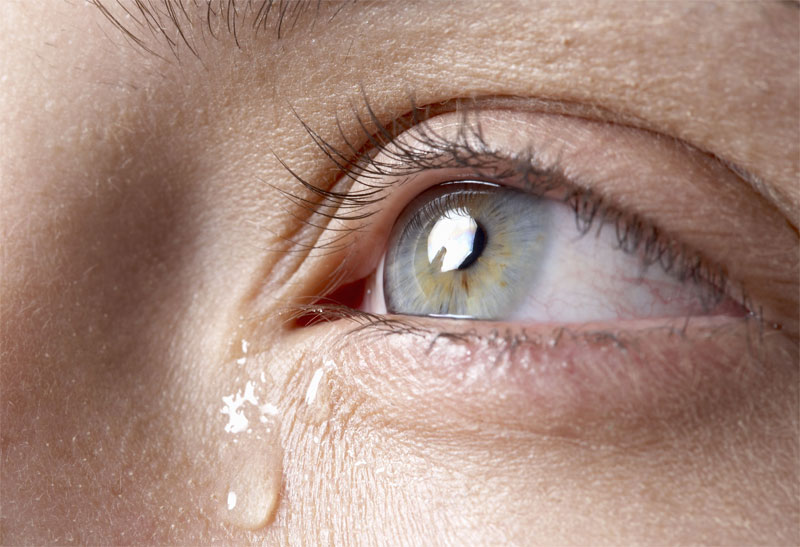 A drop of the salty fluid which forms in the lacrimal gland. The fluid keeps the eyeball moist and clean and is produced in large quantities when a person cries.
A drop of the salty fluid which forms in the lacrimal gland. The fluid keeps the eyeball moist and clean and is produced in large quantities when a person cries.
A hole or a split in a tissue often due to over-stretching.
A liquid that lubricates the eyes, keeps them clean and moist, and helps prevent infection. The majority of tears are produced in the lacrimal glands, which are located in the upper eyelids, and other glands in the conjunctiva, and they spread across the eye in a film with each blink. Excess tears drain away through a duct that leads to the nose. Inadequate tear production results in dry eye; excess production or inadequate drainage, in tearing.
The fluid secreted by the lacrimal glands to keep the front of the eyeballs moist and clean. Tears contain lysozyme, an enzyme that destroys bacteria. Irritation of the eye, and sometimes emotion, cause excessive production of tears.
The watery saline solution secreted continuously by the lacrimal glands. They lubricate the surfaces between the eyeball and eyelids (i.e., the conjunctiva). These are called continuous tears. Irritant tears are produced when a foreign object or substance is in the eye.
Let us delve into the intriguing realm of human anatomy, where we encounter a minute yet significant entity an infinitesimal droplet comprising a transparent and saline fluid. This remarkable droplet is none other than the secretion originating from the lachrymal gland. The lachrymal gland, nestled within our ocular structures, produces this remarkable substance that serves a variety of purposes, including lubricating and cleansing our eyes. Its composition and presence contribute to the overall maintenance and well-being of our visual apparatus.
The clear, saline fluid generated by the lacrimal glands, a component of the eye’s tear system. Tears serve to keep the cornea and conjunctiva adequately moist, ensuring the cornea remains transparent and shielding against ulcers. They also assist in blinking and the removal of foreign particles. Tear production escalates when the eyes are irritated or due to emotional triggers.
